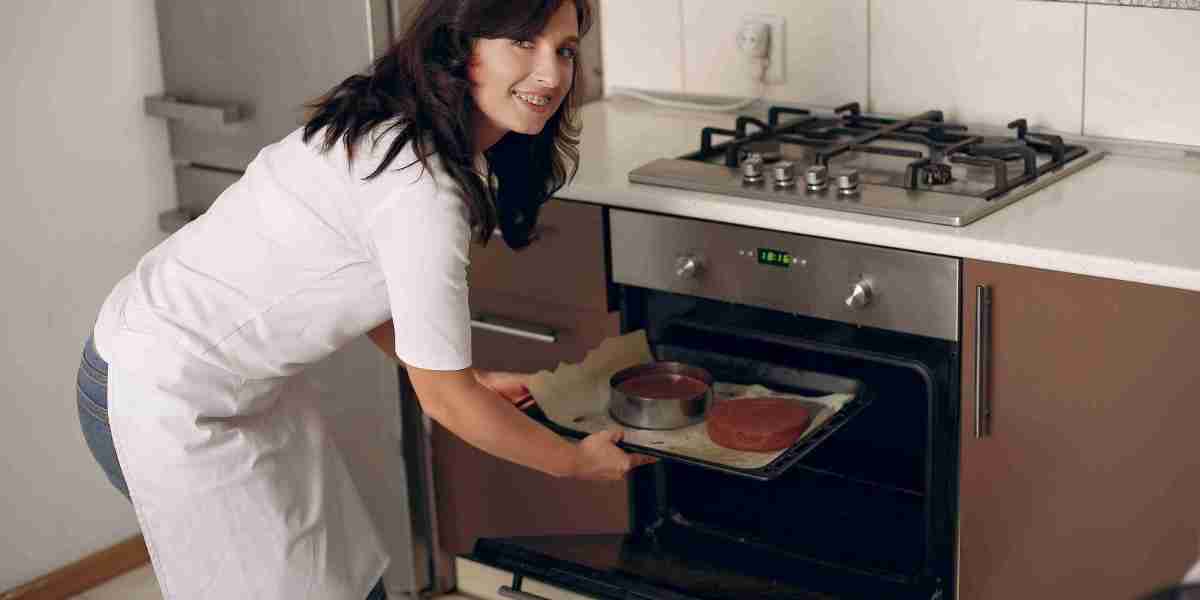
Bifold Door Repair: A Comprehensive Guide to Fixing Common Issues
Bifold doors, likewise known as folding doors, are a popular choice for homeowners looking to optimize area and develop seamless transitions between rooms or indoor and outdoor living areas. Their elegant, space-saving design enables broad openings without the swing space required by conventional hinged doors. From closets and pantries to outdoor patios and room dividers, bifold doors offer adaptability and aesthetic appeal. However, like any mechanical component in a home, bifold doors can experience wear and tear in time, leading to different operational concerns. Thankfully, numerous common bifold door vertical adjustment door issues are manageable with some standard DIY abilities and the ideal assistance.
This short article works as a comprehensive guide to understanding and resolving common bifold door repairs. We will explore common problems, equip you with the necessary tools and understanding, and stroll you through step-by-step repair processes. By understanding the mechanics of bifold doors and learning standard repair techniques, property owners can extend the life expectancy of their doors and prevent costly expert service calls.
Understanding Common bifold door refurbishment specialists Door Problems
Before diving into repairs, it's important to identify the root cause of the problem. Bifold doors, while relatively basic in style, rely on several elements working in harmony. When one part breakdowns, it can impact the whole system. Here are some of the most frequent concerns house owners experience with bifold doors:
- Hanging or Sticking Doors: This is maybe the most common problem. Doors might get stuck while opening or closing, require extreme force to move, or scrape versus the frame or flooring. This can be triggered by misaligned hinges, warped doors, or problems with the track and roller system.
- Misaligned Doors: Even when closed, bifold doors should sit flush and aligned. Misalignment can manifest as spaces between door panels, irregular spacing from the frame, or an inability to latch appropriately. This can result from loose hinges, warped doors, or shifted tracks.
- Harmed or Broken Hardware: The rollers, hinges, pivots, and tracks are the workhorses of a bifold door system. In time and with regular use, these elements can wear, break, or end up being damaged. Broken rollers can avoid smooth moving, while harmed hinges can trigger sticking and misalignment. Damaged tracks can block roller motion and lead to jerky operation.
- Loose Screws and Fittings: Vibrations from routine usage can loosen up screws and fittings that hold the hinges, tracks, and other hardware in location. Loose components can lead to instability, misalignment, and loud operation.
- Warped Doors: Exposure to moisture and temperature level fluctuations can trigger wood bifold doors to warp. Deformed doors can be hard to close appropriately, might rub versus the frame, and can create spaces.
Vital Tools and Materials for Bifold Door Repair
Having the right tools and products on hand will make the repair procedure significantly smoother and more efficient. Here's a list of common items you might need:
- Screwdrivers: A set of Phillips head and flathead screwdrivers of various sizes is necessary for tightening up and loosening screws.
- Drill/Driver: For more persistent screws or for setting up new hardware, a drill/driver can be vital. Ensure you have a range of drill bits and screwdriver bits.
- Hammer: A hammer can be helpful for carefully tapping elements into location or for removing stubborn pins.
- Pliers: Pliers work for gripping small parts, flexing metal parts, and getting rid of pins.
- Level: A level is crucial for making sure doors are effectively lined up vertically and horizontally.
- Measuring tape: For accurate measurements when replacing parts or adjusting door positions.
- Wood Shims: Shims are thin pieces of wood used for leveling and lining up doors within the frame.
- Lube (Silicone Spray or Dry Lube): Lubricant can considerably enhance the smooth operation of rollers and hinges.
- Replacement Rollers, Hinges, and Tracks: Depending on the problem, you may need to buy replacement parts. It's frequently valuable to determine the producer and model of your bifold doors to ensure you get compatible replacements.
- Wood Filler or Epoxy (for wood doors): For repairing small damage to wood doors, such as chipped corners or screw holes.
- Safety Glasses and Gloves: Always prioritize security when undertaking DIY jobs.
Step-by-Step bifold door knob repair Door Repair Guide
Now, let's dive into the useful actions for fixing typical bifold door issues:
1. Addressing Hanging or Sticking Doors:
- Inspection: Begin by thoroughly observing where the door is sticking or hanging. Is it rubbing versus the top, bottom, or side of the frame?
- Lubrication: Often, an easy lubrication of the rollers and track can fix sticking problems. Apply silicone spray or dry lube to all moving parts, consisting of rollers, hinges, and the top and bottom tracks. Open and close the door numerous times to disperse the lube.
- Hinge Adjustment: If lubrication does not resolve the concern, inspect the hinges. Loose hinges can trigger doors to sag. Tighten up any loose hinge screws. If the screws are removed, you might need to utilize longer screws or wood filler in the screw holes before re-screwing.
- Track Adjustment: In some cases, the track itself might be slightly misaligned. Check if the track is safely secured to the frame. If it's loose, tighten the screws. Minor track misalignment can often be remedied by carefully tapping the track into place with a hammer and block of wood.
- Door Warping: If the door is distorted, minor warping might be dealt with by carefully straightening it utilizing clamps and weights. However, significantly deformed doors might require to be replaced.
2. Fixing Misaligned Doors:
- Hinge Adjustment (Lateral Alignment): Misalignment can typically be fixed by changing the hinges. Loosen up the hinge screws a little and carefully shift the door panel left or right to achieve better positioning. Retighten the screws once lined up.
- Shims (Vertical Alignment): If the door is uneven vertically, you can utilize shims. Unlock and place shims behind the hinges on the lower panel to raise it or behind the hinges on the upper panel to decrease it. Explore shim positioning and thickness until the doors are lined up, then tighten the hinge screws safely.
- Leveling the Frame: In unusual cases, the door frame itself may be out of level. Utilize a level to examine the frame. If it's not level, you might require to change the frame itself, which can be a more intricate job and might require professional help.
3. Replacing Damaged Hardware (Rollers, Hinges, Tracks):
- Roller Replacement:
- Open the bifold door and find the harmed roller.
- Depending on the design, you might need to remove a keeping clip or screw to release the old roller.
- Carefully eliminate the old roller.
- Insert the brand-new roller, ensuring it is effectively seated and secured.
- Evaluate the door operation.
- Hinge Replacement:
- Open the door and determine the harmed hinge.
- Eliminate the screws holding the hinge to both door panels and the frame.
- Remove the old hinge.
- Position the brand-new hinge in the exact same location.
- Secure the brand-new hinge with screws.
- Test the door operation.
- Track Replacement: Replacing a track is a more involved procedure and is normally just required if the track is seriously harmed or bent.
- Remove the bifold doors from the track.
- Loosen the old track from the frame.
- Step and cut the new track to the appropriate length, if required.
- Position the new track and protect it to the frame with screws.
- Re-install the bifold doors.
- Check the door operation.
4. Tightening Loose Screws and Fittings:
- Regular Inspection: Periodically inspect all screws and fittings on your bifold door adjustment doors.
- Tightening: Use a screwdriver to tighten up any loose screws.
- Stripped Screw Holes: If screws are regularly loosening or removed, you can use wood filler (for wood doors) or epoxy to repair the screw holes. Fill the hole, let it dry, pre-drill a pilot hole, and then re-install the screw. Alternatively, usage somewhat longer or larger screws to get a better grip.
Routine Maintenance for Bifold Doors
Preventative upkeep is essential to extending the life of your bifold doors and lessening the need for repairs. Here are some important upkeep suggestions:
- Regular Cleaning: Keep the tracks and rollers clean from dust, debris, and pet hair. Vacuum or wipe down tracks regularly.
- Lubrication: Lubricate rollers and hinges at least twice a year or whenever you discover the doors beginning to stick or squeak.
- Examine Hardware Periodically: Check for loose screws, used rollers, or damaged hinges during your routine home upkeep checks.
- Gentle Operation: Avoid slamming or forcing bifold doors. Operate them smoothly and gently to avoid unneeded tension on the hardware.
When to Call a Professional
While numerous bifold door issues can be tackled DIY, there are scenarios where it's finest to call an expert handyman or door specialist:
- Significant Door Warping: Severely distorted doors may be beyond DIY repair and need professional replacement.
- Complex Track Issues: If the track is substantially bent, damaged, or if you think structural problems with the frame, professional knowledge is advised.
- Lack of DIY Experience: If you are uneasy with DIY repairs or lack the necessary tools, seeking professional aid is constantly a safe and sensible option.
- Time Constraints: If you are brief on time or prefer to have actually the repair done quickly and effectively, a professional can manage the job.
Conclusion
Bifold doors are an important addition to any home, providing space effectiveness and visual appeal. Comprehending their mechanics and common problems empowers house owners to perform basic repairs and upkeep, ensuring their durability and smooth operation. By following the actions laid out in this guide, and with a little patience and the right tools, you can successfully attend to most bifold door issues and keep your doors working flawlessly for years to come. Keep in mind, regular maintenance and prompt attention to minor issues can avoid bigger issues and save you money and time in the long run.
Frequently Asked Questions (FAQs) about Bifold Door Repair
Q: Why are my bifold doors sticking?A: Sticking quick bifold door repairs (simply click the up coming website) doors are often triggered by lack of lubrication, misaligned hinges, or debris in the tracks and rollers.
Q: How often should I oil bifold door rollers?A: It's advised to oil bifold door rollers a minimum of two times a year or whenever you see the doors becoming less smooth to operate.
Q: Can I replace bifold door rollers myself?A: Yes, changing bifold door fixes door rollers is a relatively simple DIY task. Ensure you purchase compatible replacement rollers for your door type.
Q: My bifold doors are misaligned even when closed. How can I repair this?A: Misalignment can typically be fixed by adjusting the hinges. Try loosening hinge screws and gently shifting door panels for better positioning, or use shims behind hinges to adjust vertical positioning.
Q: What type of lubricant is best for bifold door rollers?A: Silicone spray or dry lubricant are outstanding choices for bifold door rollers as they are less most likely to attract dust and particles compared to oil-based lubricants.
Q: When should I think about replacing my bifold doors rather of repairing them?A: Consider replacing bifold doors if they are substantially distorted, thoroughly damaged, or if the expense of repairs outweighs the cost of brand-new doors, particularly if they are old and worn out.











